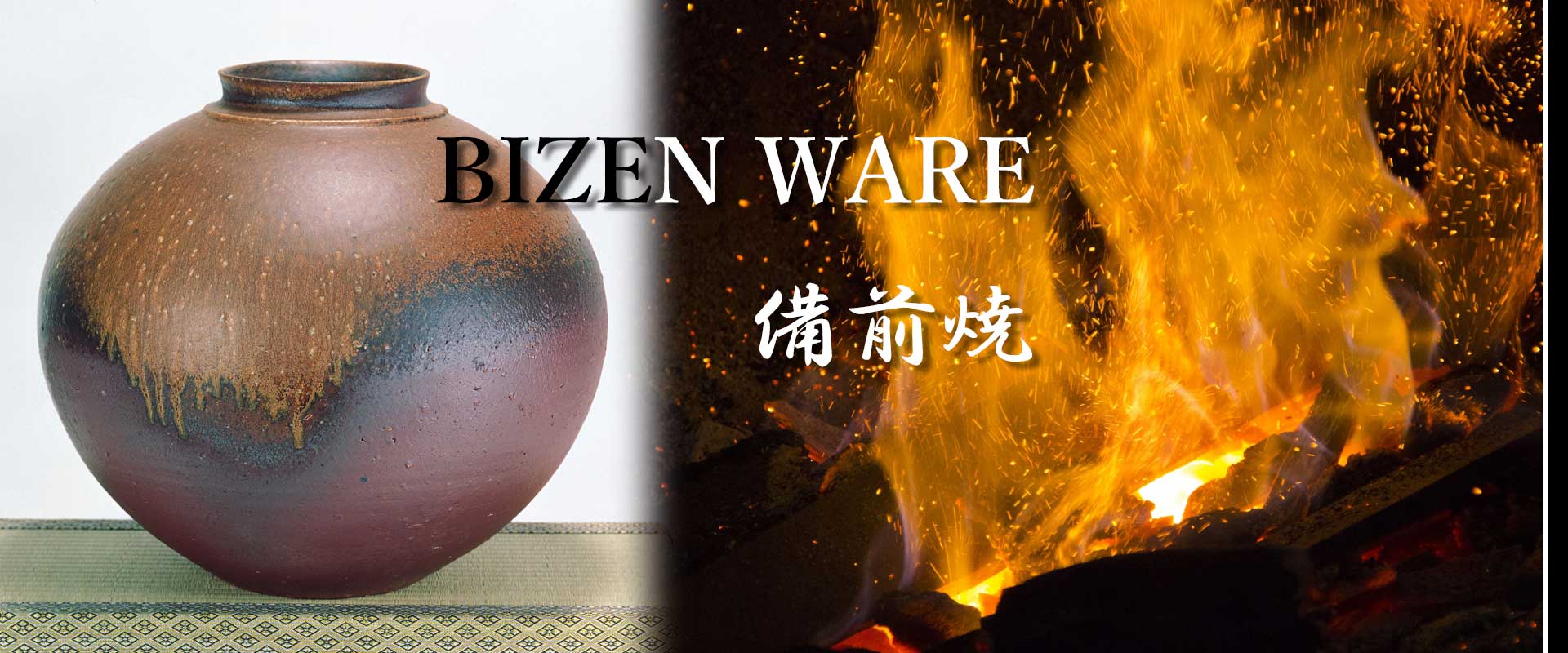

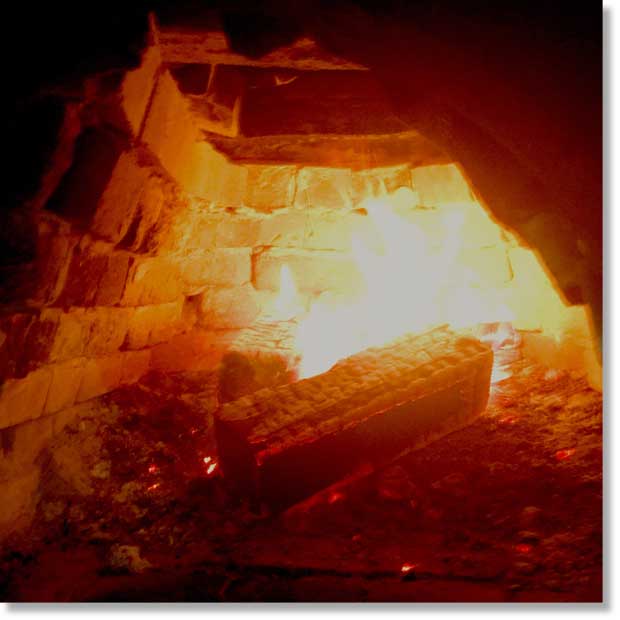

The oldest ceramic shards found in Japan date back some 12,000 years and are thought to be among
the world's earliest pottery.That was the pottery of the Jomon(c.10000-250BC) culture, followed by the
Yayoi(c.250BC-250AD) culture, which was open pit-fired, porous, and made without a potter's wheel.
In the fifth century potters and other technical experts were invited to Japan from what is now Korea.
Inception of the technically advanced Sue ware took place at that time bringing to Japan the potter's wheel
and anagama tunnel kiln. Sue ware is characterized by having a sharp, fine, delicate, form, thin walls,
and a light blue-grayish color.
The oldest ceramic shards found in Japan date back some 12,000 years and are thought to be among
the world's earliest pottery.That was the pottery of the Jomon(c.10000-250BC) culture, followed by the
Yayoi(c.250BC-250AD) culture, which was open pit-fired, porous, and made without a potter's wheel.
In the fifth century potters and other technical experts were invited to Japan from what is now Korea.
Inception of the technically advanced Sue ware took place at that time bringing to Japan the potter's wheel
and anagama tunnel kiln. Sue ware is characterized by having a sharp, fine, delicate, form, thin walls,
and a light blue-grayish color.
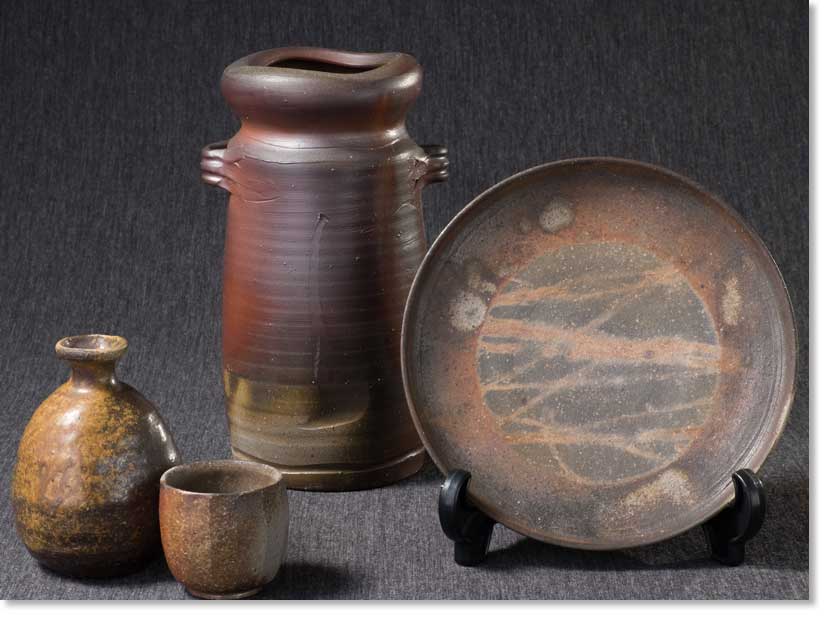
It was made throughout the Heian period (794-1185AD) and used mainly in religious
ceremonies and by the aristocratic society.
The end of the 12th century also marked the end of the Heian period, and of its court aristocracy,
and the beginning of the Kamakura period (1185-1338) with its feudal system of government.
The Kamakura society required more utilitarian ceramics for everyday living rather than of
artistic value. At this time six large pottery production centers came into prominence in Japan
evolving to produce rougher, heavier, higher fired, more durable pottery and Bizen was one of
those centers. From the Kamakura period the pottery made in Bizen began to have unique qualities
such as reddish or brownish color surface and melted ash resembling sesame seeds and so is
called Bizen ware.

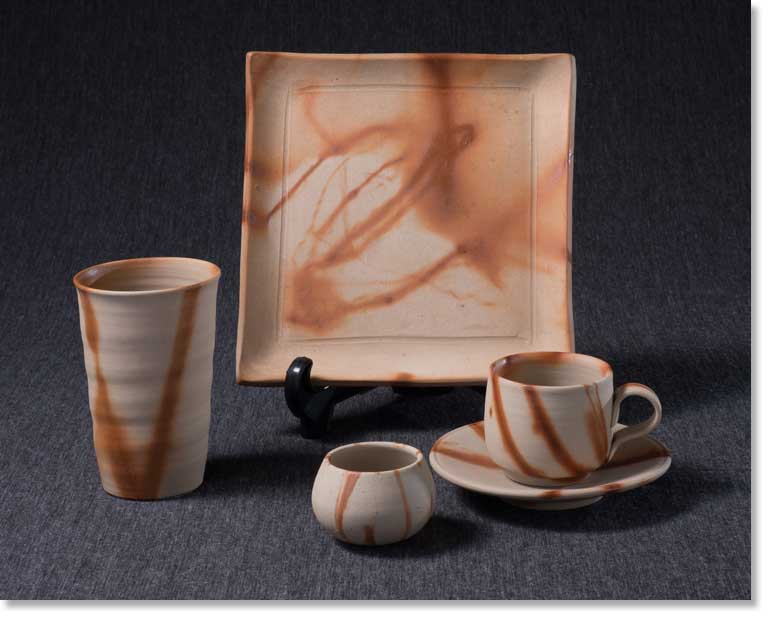
In the Muromachi period (1338-1573) Bizen became the most popular ceramic in Japan
because of its superior clay, quiet atmosphere, durability, and water preserving qualities.
The next period, Momoyama (1573-1600), was like the renaissance in the west, the golden age of art
in Japan. During this period giant 5×50 meter tunnel kilns were made in Bizen.
The great lord Toyotomi Hideyoshi and the great tea master Sen no Rikyu both loved Bizen ware and
greatly supported it. Many tea ware masterpieces were made during this period.
In the Muromachi period (1338-1573) Bizen became the most popular ceramic in Japan
because of its superior clay, quiet atmosphere, durability, and water preserving qualities.
The next period, Momoyama (1573-1600), was like the renaissance in the west, the golden age of art
in Japan. During this period giant 5×50 meter tunnel kilns were made in Bizen.
The great lord Toyotomi Hideyoshi and the great tea master Sen no Rikyu both loved Bizen ware and
greatly supported it. Many tea ware masterpieces were made during this period.
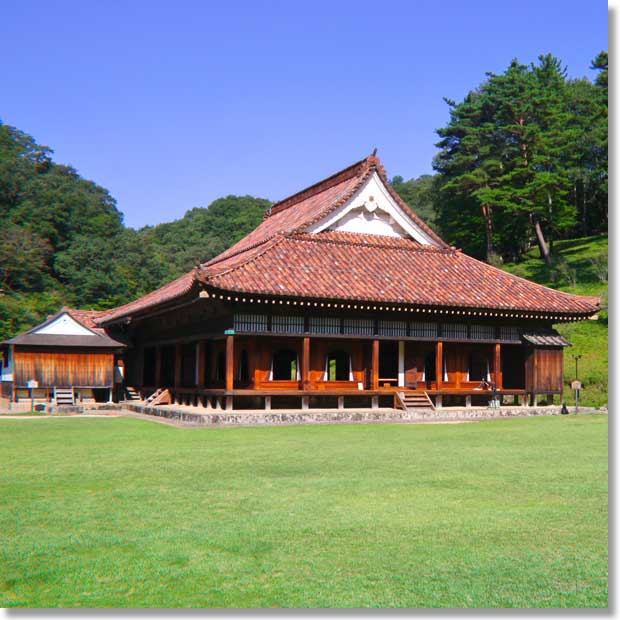
In the Edo period (1603-1868) porcelain was in fashion, surpassing Bizen ware in popularity. The feudal lord of the Bizen area Ikeda Mitsumasa, began to protect Bizen ware but even so, popularity continued to steadily decline. The roof tiles of the Shizutani school, Which Ikeda Mitsumasa created for the purpose of educating common people, were made of Bizen pottery and the lecture hall has been designated as an Important National Cultural Property.

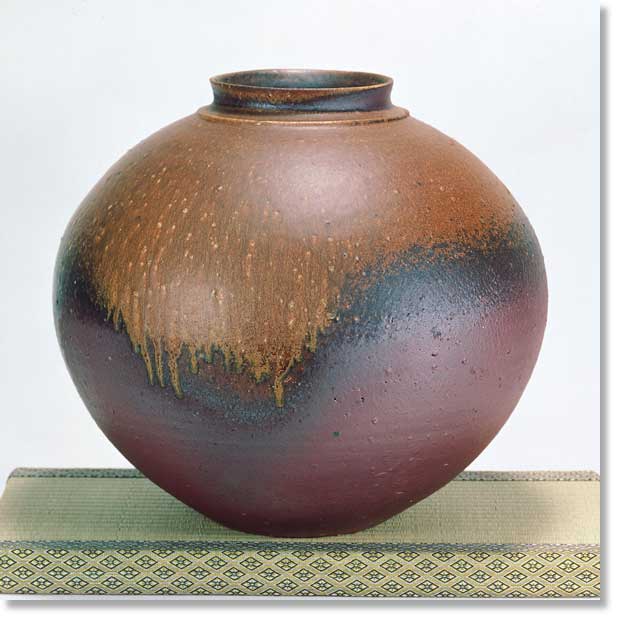
With the Meiji restoration (1868), Japan opened its doors to the west
and the public lost interest in Japanese traditional arts. This was disastrous for Bizen
but even so, small individual kilns began to be fired, though drain pipe and refractory brick
production was the main industry.
After 1945 there were cultural revival movements in Japan. Kaneshige Toyo was successful in his
attempts to make wares of Momoyama period quality and was designated a living national treasure.
His efforts are largely responsible for the present day prosperity of Bizen ware.
With the Meiji restoration (1868), Japan opened its doors to the west
and the public lost interest in Japanese traditional arts. This was disastrous for Bizen
but even so, small individual kilns began to be fired, though drain pipe and refractory brick
production was the main industry.
After 1945 there were cultural revival movements in Japan. Kaneshige Toyo was successful in his
attempts to make wares of Momoyama period quality and was designated a living national treasure.
His efforts are largely responsible for the present day prosperity of Bizen ware.

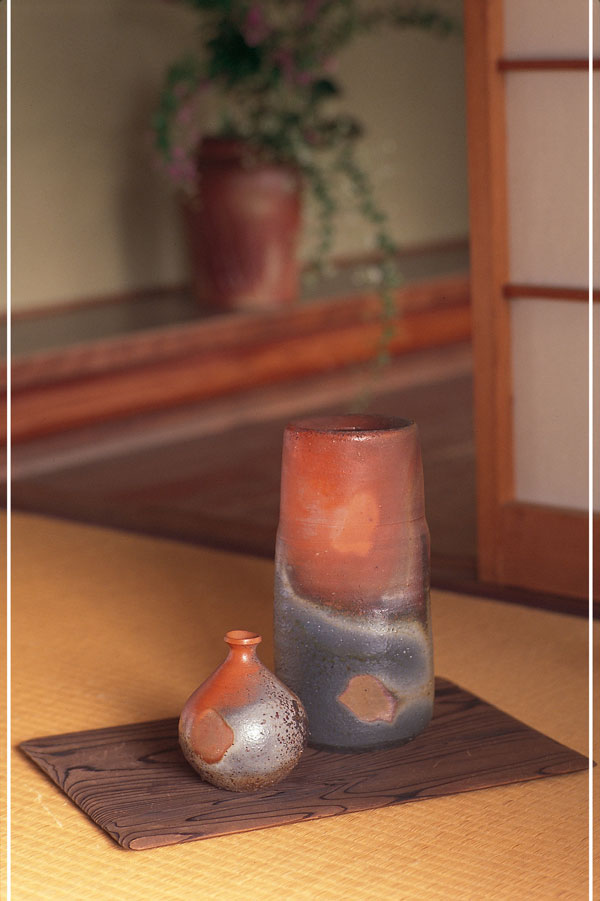
Bizen ware is put in the kiln unglazed, but due to the effects of the 8 to 20-day
pine wood firing, reaching temperatures of approximately 1250°C(2282 F°), becomes naturally glazed
with pine ash or acquires various subdued colors. At its best, the form is forceful and has some feeling
of mass without being stiff or unnatural. There is a feeling of spontaneity and the product is not at all showy.
Bizen ware is simple and unassuming in form but has a noble quality. The clay is very beautiful just
as dug from the rice paddy and the best pieces are made and fired so as to accentuate the beauty of that clay.
The quiet atmosphere and subdued colors perfectly compliment brightly colored flowers and food enticing
the user to create a harmonious arrangement. Water preserving qualities allow flowers to last longer in Bizen vases;
beer attains a wonderfully full head in Bizen cups.
The color and texture of Bizen ware improve when handled. When used daily, the user can take pleasure in its
increasing beauty. In this way even a small and simple article will, with time, become a treasured object.
Bizen ware is put in the kiln unglazed, but due to the effects of the 8 to 20-day
pine wood firing, reaching temperatures of approximately 1250°C(2282 F°), becomes naturally glazed
with pine ash or acquires various subdued colors. At its best, the form is forceful and has some feeling
of mass without being stiff or unnatural. There is a feeling of spontaneity and the product is not at all showy.
Bizen ware is simple and unassuming in form but has a noble quality. The clay is very beautiful just
as dug from the rice paddy and the best pieces are made and fired so as to accentuate the beauty of that clay.
The quiet atmosphere and subdued colors perfectly compliment brightly colored flowers and food enticing
the user to create a harmonious arrangement. Water preserving qualities allow flowers to last longer in Bizen vases;
beer attains a wonderfully full head in Bizen cups.
The color and texture of Bizen ware improve when handled. When used daily, the user can take pleasure in its
increasing beauty. In this way even a small and simple article will, with time, become a treasured object.